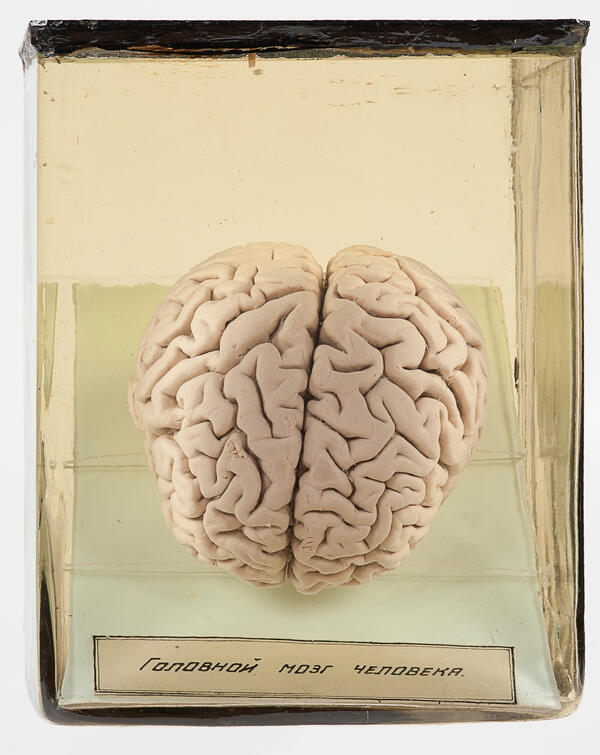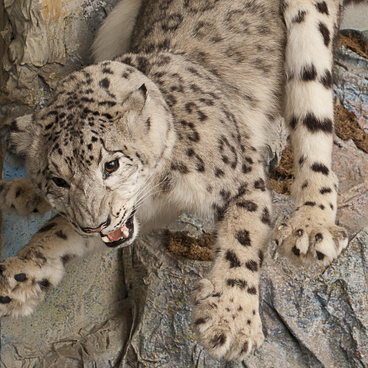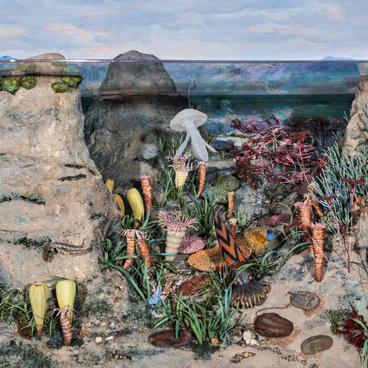The cerebral hemispheres stand for 75–80% of the total mass of the central nervous system: the cerebrum and spinal cord. They contain the highest centers of sensory (visual, gustatory, auditory) and other systems, the centers of the mind, and the centers connected with will and decisions.
The outer surface of the large hemispheres is covered with gray cortical substances. It contains layers of bodies and short branches of nerve cells–neurons. The cortex thickness is 1,5–5 millimeters. There is white matter–axons, or long nerve cell under it.
The surface of the cerebral cortex has grooves and gyrations. Due to a large number of folds, the cerebral cortex area is about 2200–2500 sq cm. The bigger this area is, the more nerve cells there are in the brain and the higher its computational power.
The cerebral cortex consists of three areas: ancient, old, and new. Its oldest function is the olfactory one. It was originally formed to recognize smells. This part of the cortex occupies only 1–1,5% of the total volume.
The old cortex occupies only 2–3% of total brain volume. The key structure of this part is called the hippocampus. The function of the old cortex is connected with short-term memory and its transformation into long-term memory. The hippocampus is also responsible for forgetting information and encoding the surrounding space. The old cortex helps to navigate and make the shortest routes.
The new cortex contains the centers and zones that deal with the most complex processes. It is divided into several functional lobes.
The frontal lobe of the brain is connected with the process of organization of self-produced movement. It contains the highest mental centers responsible for thinking, memory, and one of the centers of speech–the Broca center. The prefrontal cortex responsible for making decisions, initiative, and selection of behavioral programs is located in the frontal area.
The front part of the parietal lobe is responsible for pain, skin and muscle sensitivity. The associative center connected with the thinking and understanding of words is located in the backside.
The visual centers are located in the end lobe. Its neurons are engaged in the analysis of visual images, geometric shapes, human faces, letters, and other signals supplied by the visual apparatus. If a man is blind, his end lobe is responsible for the processing of information taken from other analyzers–hearing, smell, tactile sense–and sharpening of their sensitivity.
The temporal lobe is the auditory area. It takes information from the inner ear — cochlea. Thanks to these nerve cells, people can recognize timbres and tones, distinguish people’s voices and surrounding space sounds. There is also Wernicke’s center synthesizing speech, and the center of smell.
The outer surface of the large hemispheres is covered with gray cortical substances. It contains layers of bodies and short branches of nerve cells–neurons. The cortex thickness is 1,5–5 millimeters. There is white matter–axons, or long nerve cell under it.
The surface of the cerebral cortex has grooves and gyrations. Due to a large number of folds, the cerebral cortex area is about 2200–2500 sq cm. The bigger this area is, the more nerve cells there are in the brain and the higher its computational power.
The cerebral cortex consists of three areas: ancient, old, and new. Its oldest function is the olfactory one. It was originally formed to recognize smells. This part of the cortex occupies only 1–1,5% of the total volume.
The old cortex occupies only 2–3% of total brain volume. The key structure of this part is called the hippocampus. The function of the old cortex is connected with short-term memory and its transformation into long-term memory. The hippocampus is also responsible for forgetting information and encoding the surrounding space. The old cortex helps to navigate and make the shortest routes.
The new cortex contains the centers and zones that deal with the most complex processes. It is divided into several functional lobes.
The frontal lobe of the brain is connected with the process of organization of self-produced movement. It contains the highest mental centers responsible for thinking, memory, and one of the centers of speech–the Broca center. The prefrontal cortex responsible for making decisions, initiative, and selection of behavioral programs is located in the frontal area.
The front part of the parietal lobe is responsible for pain, skin and muscle sensitivity. The associative center connected with the thinking and understanding of words is located in the backside.
The visual centers are located in the end lobe. Its neurons are engaged in the analysis of visual images, geometric shapes, human faces, letters, and other signals supplied by the visual apparatus. If a man is blind, his end lobe is responsible for the processing of information taken from other analyzers–hearing, smell, tactile sense–and sharpening of their sensitivity.
The temporal lobe is the auditory area. It takes information from the inner ear — cochlea. Thanks to these nerve cells, people can recognize timbres and tones, distinguish people’s voices and surrounding space sounds. There is also Wernicke’s center synthesizing speech, and the center of smell.



